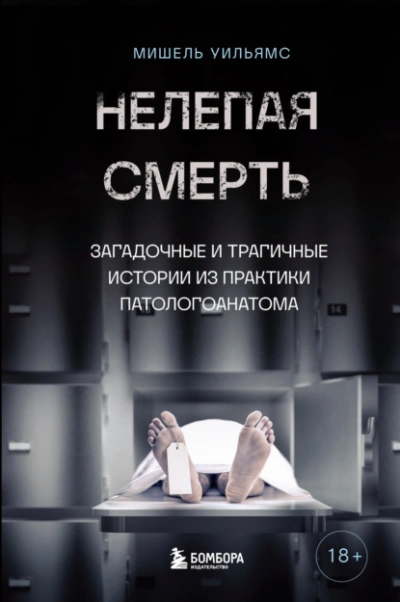Шрифт:
Интервал:
Закладка:
Thomas, A., and Chess, S. (1984). Genesis and evolution of behavioural disorders: From infancy to early adult life. American Journal of Psychiatry, 141, 1–9.
Webb, W. B., and Agnew, H. W. (1974). Regularity in the control of the free-running sleep-wakefulness rhythm. Aerospace Medicine, 45, 701–704.
Weissbluth, M. (1982). Modification of sleep schedule with reduction of night waking: A case report. Sleep, 5, 262–266.
Winnicott, D. W. (1965). The capacity to be alone. In D. W. Winnicott, The Maturational Processes and Facilitating Environment (29–36). New York: International Universities Press.
Глава 7. 13–36-й месяцы
Gutelius, M. E., and Kirsch, A. D. (1977). Controlled study of child health supervision: Behavioral results. Pediatrics, 60, 294–304.
Howarth, E., and Hoffman, M. S. (1984). A multidimensional approach to the relationship between mood and weather. British Journal of Psychology, 75, 5–23.
Kahyama, J., Shiike, T., and Hasegawa, T. (2000). Young children who are late sleepers sleep less than early sleepers. Sleep, 23 (Abstract Suppl. 2), A198 – A199.
Largo, R. H., and Honziker, U. A. (1984). A developmental approach to the management of children with sleep disturbances in the first three years of life. European Journal of Pediatrics, 142, 170–173.
Lozoff, B., Wolf, A. W., and Davis, N. S. (1985). Sleep problems seen in pediatric practice. Pediatrics, 75, 477–483.
Lyons, J. T., and Oates, R. K. (1993). Falling out of bed: A relatively benign occurrence. Pediatrics, 92, 125–127.
Richman, N. (1981). A community survey of one– to two-year-olds with sleep disruptions. Journal of the American Academy of Child Psychiatry, 20, 281–291.
Scher, A., Tirosh, E., and Lavie, P. (1998). The relationship between sleep and temperament revisited: Evidence for 12-month-olds: A research note. Journal of Child Psychiatry and Allied Disciplines, 39, 785–788.
Van Tassel, E. B. (1985). The relative influence of child and environmental characteristics on sleep disturbances in the first and second years of life. Journal of Developmental and Behavioral Pediatrics, 6, 81–86.
Williams, C. D. (1959). Case report: The elimination of tantrum behaviour by extinction procedures. Journal of Abnormal and Social Psychology, 59, 269.
Глава 8. Дошкольники
Atkinson, E., Vetere, A., and Grayson, K. (1995). Sleep disruption in young children. The influence of temperament on the sleep patterns of pre-school children. Child: Care, Health and Development, 21, 233–246.
Bates, J. E., Viken, R. J., Alexander, D. B., Beyers, J., and Stockton, S. (2002). Sleep and adjustment in preschool children: Sleep diary reports by mothers relate to behaviour reports by teachers. Child Development, 73, 62–74.
Christophersen, Edward R. (1998). Beyond Discipline: Parenting That Lasts a Lifetime, 2nd ed. (127–128). Shawnee Mission, Kansas: Overland Press.
Clarkson, S., Williams, S., and Silva, P. A. (1986). Sleep in middle childhood – a longitudinal study of sleep problems in a large sample of Dunedin children aged 5–9 years. Australian Paediatric Journal, 22, 31–35.
Cullen, K. J. (1976). A 6-year controlled trial of prevention of children’s behaviour disorders. Journal of Pediatrics, 88, 662–666.
Fukuda, K., and Sakashita, Y. (2002). Sleeping pattern of kindergartners and nursery school children: Function of daytime nap. Perceptual and Motor Skills, 94, 219–228.
Gregory, A. M., and O’Connor, T. G. (2002). Sleep problems in childhood: A longitudinal study of developmental change and association with behavioural problems. Journal of the American Academy of Child & Adolescent Psychiatry, 41, 954–971.
Jones, D. P. H., and Verduyn, C. M. (1983). Behavioral management of sleep problems. Archives of Diseases of Children, 58, 442–444.
Kohyama, J., Shiike, T., Ohinata-Sugimoto, J., and Hasegawa, T. (2002). Potentially harmful sleep habits of 3-year-old children in Japan. Journal of Developmental and Behavioral Pediatrics, 23, 67–70.
Lavigne, J. V., Arend, R., Rosenbaum, D., Smith, A., Weissbluth, M., Binns, H. J., and Christoffel, K. K. (1999). Sleep and behaviour problems among preschoolers. Journal of Developmental and Behavioral Pediatrics, 20, 164–169.
Manber, R., Bootzin, R. R., Acebo, C., and Carskadon, M. A. (1996). The effects of regularising sleep-wake schedules on daytime sleepiness. Sleep, 19, 432–441.
Mantz, J., Muzet, A., Neiss, R. (1995). Sleep in 6-year-old children: Survey in school environment. Archives of Pediatrics, 21, 215–220.
Minde, K., Popiel, K., Leos, N., Falkner, S., Parker, K., and Handley-Derry, M. (1993). The evaluation and treatment of sleep disturbances in young children. Journal of Child Psychology and Psychiatry, 34, 521–533.
Owens-Stively, J., Frank, N., Smith, A., Hagino, O., Spirito, A., Arigan, M., and Alario, A. J. (1997). Child temperament, parenting discipline style, and daytime behaviour in childhood sleep disorders. Journal of Developmental and Behavioral Pediatrics, 18, 314–321.
Richman, N., Douglas, J., Hunt, H., Lansdown, R., and Levere, R. (1985). Behavioral methods in the treatment of sleep disorders – A pilot study. Journal of Child Psychology and Psychiatry, 26, 581–590.
Sekine, Y., Yamagami, T., Handa, K., Saito, T., Nanre, S., Kawaminami, K., Tokui, N., Yoshida, K., and Kagamimori, S. (2002). A dose-response relationship between short sleeping hours and childhood obesity: Results of the Toyama Birth Cohort Study. Child: Care, Health and Development, 28, 163–170.
von Kries, R., Toschke, A. M., Wurnser, H., Sauerwald, T., and Koletsko, B. (2002). Reduced risk for overweight and obesity in 5– and 6-year-old children by duration of sleep – a crosssectional study. International Journal of Obesity and Related Metabolic Disorders, 26, 710–716.
Witting, W., Mirmiran, M., Bos, N. P., and Swaab, D. F. (1993). Effect of light intensity on diurnal sleep-wake distribution in young and old rats. Brain Research Bulletin, 30, 157–162.
Wright, L., Woodcock, J., and Scott, R. (1970). Treatment of sleep disturbance in a young child by conditioning. Southern Medical Journal, 63, 174–176.
Глава 9. Школьники и подростки
Acebo, C., and Carskadon, M. A. (2002). Influence of irregular sleep patterns on waking behaviour. In M. A. Carskadon (ed.), Adolescent Sleep Patterns. Biological, Social, and Psychological Influences, (220–235). Cambridge: Cambridge University Press.
Anders, T. E., Carskadon, M. A., Dement, W. C., and Harvey, K. (1978). Sleep habits of children and the identification of pathologically sleepy children. Child Psychiatry and Human Development, 9, 56–63.
Anderson, D. R. (1979). Treatment of insomnia in a 13-year-old boy by relaxation training and reduction of parental attention. Journal of Behavioral Therapy and Experimental Psychiatry, 10, 263–265.
Asnes, R. S., Sautulli, R., and Beuporad, J. R. (1981). Psychogenic chest pain in children. Clinical Pediatrics, 20, 788–792.
Backeland, F., and Lasky, R. (1966). Exercise and sleep patterns in college athletes. Perceptual and Motor Skills, 23, 1203–1207.
Blader, J. C., Kopewicz, H. S., Abikoff, H., and Foley, C. (1997). Sleep problems of elementary school children: A community survey. Archives of Pediatrics and Adolescent Medicine, 151, 473–480.
Bootzin, R. R., and Perlis, M. L. (1992). Nonpharmacologic treatments of insomnia. Journal of Clinical Psychiatry, 53, 27–41.
Bootzin, R. (1972). A stimulus control treatment for insomnia. Proceedings of the American Psychological Association, 7, 395–396.
Carskadon, M. A. (2002). Adolescent Sleep Patterns. Biological, Social, and Psychological Influences. Cambridge: Cambridge University Press.
Carskadon, M. A., Vieiera, C., and Acebo, C. (1993). Association between puberty and delayed phase preference. Sleep, 16, 258–262.
Czeisler, C. A., Weitzman, E. D., Moore-Ede, M. C., Zimmerman, J. C., and Knaver, R. S. (1980). Human sleep: Its duration and organisation depend on its circadian phases. Science, 210, 1264–1267.
Dollinger, S. J. (1985). Effects of a paradoxical intervention on a child’s anxiety about sleep– and sports-related performance. Perceptual and Motor Skills, 61, 83–86.
Epstein, R., Chillag, N., and Lavie, P. (1998). Stating times of school: Effects on daytime functioning of fifth-grade children in Israel. Sleep, 21, 250–256.
Espie, C. A., and Lindsay, W. R. (1985). Paradoxical intention in the treatment of chronic insomnia. Behavioral Research and Therapy, 23, 703–709.
Fallone, G. P., Seiffer, R., Acebo, C., and Carskadon, M. A. (2000). Prolonged sleep restriction in 11– and 12-year-old children: Effects on behaviour, sleepiness, and mood. Sleep, 23, (Suppl.), A28.
Fukuda, K., and Ishihara, K. (2002). Routine evening naps and night-time sleep patterns in junior high and high school students. Psychiatry and Clinical Neurosciences, 56, 229–230.
Gau, S. F., and Soong, W. T. (1995). Sleep problems of junior high school students in Taipei. Sleep, 18, 667–673.
Hauri, P., and Fisher, J. (1986). Persistent psychophysiologic (learned) insomnia. Sleep, 9, 38–53.
Hicks, R. A., and Pellegrini, R. J. (1991). The changing sleep habits of college students. Perceptive Motor Skills, 72, 1106.
Kahn, A., Van de Merckt, C., Rebuffat, E., Mozin, M. J., Sottiaux, M., Blum, D., and Hennart, P. (1989). Sleep problems in healthy preadolescents. Pediatrics, 84, 542–546.
Kirmil-Gray, K., Eagleston, J. R., Gibson, E., and Theresen, C. E. (1985). Sleep disturbances in adolescents: Sleep quality, sleep habits, beliefs about sleep, and daytime functioning. Journal of Youth and Adolescence, 13, 375–384.
Liu, X., Sun, Z., Uchiyama, M., Shibui, K., and Kim, K. (2000). Prevalence and correlates of sleep problems in Chinese schoolchildren. Sleep, 23, 1053–1062.
Liu, X., Uchiyama, M., Okawa, M., and Kurita, H. (2000). Prevalence and correlates of self-reported sleep problems among Chinese adolescents. Sleep, 23, 27–34.
Manni, R., Ratti, R. T., Marchioni, E., Castelovo, G., Murelli, R., Sartori, I., Galimberti, C. A., and Tartara, A. (1997). Poor sleep in adolescents: A study of 869 17-year-old Italian secondary school students. Journal of Sleep Research, 6, 44–49.
Morrison, D. N., McGee, R., and Stanton, W. R. (1992). Sleep problems in adolescence. Journal of American Academy of Child and Adolescent Psychiatry, 31, 94–99.
Nicassio, P. M., and Buchanan, D. C. (1981). Clinical application of behaviour therapy for insomnia. Comprehensive Psychiatry, 22, 512–521.
Price, V. A., Coates, T. J., Thoresen, C. E., and Grinstead, O. A. (1978). Prevalence and correlates of poor sleep among adolescents. American Journal of Diseases of Children, 132, 582–586.
Randazzo, A. C., Muehlbach, M. J., Schweitzer, P. K., and Walsh, J. K. (1998). Cognitive function following acute sleep restriction in children ages 10–14. Sleep, 21, 861–868.
Randazzo, A. C., Schweitzer, P. K., and Walsh, J. K. (1998). Cognitive function following 3 nights of sleep restriction in children 10–14. Sleep, 21 (Suppl.), A249.
Reid, A., Maldonado, C. C., and Baker, F. C. (2002). Sleep behaviour of South African adolescents. Sleep, 25, 423–427.
Roberts, R. E., Roberts, C. R., and Chen, I. G. (2002). Impact of insomnia on future functioning of adolescents. Journal of Psychosomatic Research, 53, 561–569.
Sadeh, A., Gruber, R., and Raviv, A. (2002). Sleep, neurobehavioural functioning, and behaviour problems in school-aged children. Child Development, 73, 405–417.
Синдром отсроченной фазысна
Czeisler, C. A., Richardson, G. S., Coleman, R. M., Zimmerman, J. C., Moore-Ede, M. C., Dement, W. C., and Weitzman, E. D. (1981). Chronotherapy: Resetting the circadian clocks of patients with delayed sleep phase insomnia. Sleep, 4, 1–21.
Weitzman, E. D., Czeisler, C. A., Coleman, R. M., Spielman, A. J., Zimmerman, J. C., and Dement, W. C. (1981). Delayed sleep phase syndrome: A chronobiological disorder with sleep-onset insomnia. Archives of General Psychiatry, 38, 737–746.
Синдром Клейне – Левина
Ferguson, B. G. (1986). Kleine-Levin syndrome: A case report. Journal of Child Psychological Psychiatry, 27, 275–278.
Waller, D. A., Jarriel, S., Erman, M., and Emslie, G. (1984). Recognizing and managing the adolescent with Kleine-Levin syndrome. Journal of Adolescent Health Care, 5, 139–141.
Синдром фибромиалгии
Anthony, K. K., and Schanberg, L. E. (2001). Juvenile primary fibromyalgia syndrome. Current Rheumatology Reports, 3, 165–171.
Buskila, D., Neumann, L., Hershman, E., Gedalia, A., Press, J., and Sukenik, S. (1995). Fibromyalgia syndrome in children – An outcome study. Journal of Rheumatology, 22, 525–528.
Mikkelsson, M., Sourander, A., Piha, J., and Salminen, J. J. (1997). Psychiatric symptoms in preadolescents with musculoskeletal pain and fibromyalgia. Pediatrics, 100, 220–227.
Reid, G. J., Lang, B. A., and McGrath, P. J. (1997). Primary juvenile fibromyalgia: Psychological adjustment, family functioning, coping, and functional disability. Arthritis and Rheumatism, 40, 752–760.
Roizenblatt, S., Tufik, S., Goldenberg, J., Pinto, L. R., Hilaria, M. O., and Feldman, D. (1997). Juvenile fibromyalgia: Clinical and polysomnographic aspects. Journal of Rheumatology, 24, 579–585.
Siegel, D. M., Janeway, D., and Baum, J. (1998). Fibromyalgia syndrome in children and adolescents: Clinical features at presentation and status at follow-up. Pediatrics, 101, 377–382.
- Информационная технология освобождения от алкогольной и никотиновой зависимости, депрессии, хронической усталости - М. Тетюшкин - Здоровье
- Совершенное зрение без очков - Бейтс Уильям Горацио - Здоровье
- Здоровый дом - Елена Самохина - Здоровье
- Небо слаще - Евгений Шарков - Здоровье
- Главная книга о здоровье - Лууле Виилма - Здоровье
- Календарь домашнего доктора на 2014 год - Юлия Попова - Здоровье
- Аэробика для груди - Евгений Гаткин - Здоровье
- Буду мамой! Все о беременности и первом годе жизни малыша. 1000 ответов на 1000 главных вопросов - Елена Сосорева - Здоровье
- Здоровый позвоночник - Валерий Периостовцев - Здоровье
- Кожные болезни и аллергия - Лууле Виилма - Здоровье







